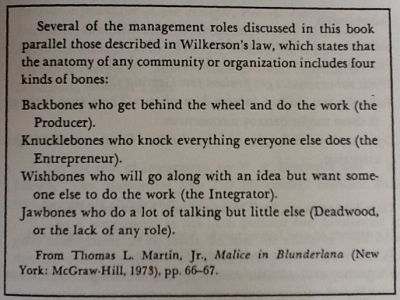As Easy As PAEI
Between bouts of consultancy in places as diverse as Nigeria and China, a pal of mine lent me a couple of books by his current favourite business guru; Ichak Adizes.
That I’d never heard of the fella did irk me somewhat. Especially considering that the two tomes were written way back; 1979 & 1992.
The more recent was written in the style of conversations that irritated me greatly. I preferred his earlier work; How To Solve The Mismanagement Crisis.
He offers up many strands. Briefly, he feels change is constant. And that change always produces conflict. The idea is not to eliminate that conflict, but turn it from destructive to constructive.
Although looking distinctly with a ‘management’ lens, this is so striking from a solution sales point of view too.
Part of his methodology is that there are four management styles. You must exhibit and pursue all four in order for a decision to be effective. If one unduly subverts, or removes, another, then disaster awaits.
I immediately thought of the main buying influences. Whichever ‘sales process’ template you subscribe too, there will be these at its core. In my cubrep days for instance, the ones I followed were Financial, User, Commercial, Technical. Cover each of these and you were home. Miss one, and the commission was gone.
I wondered how relevant it would be to suggest that his four styles mapped onto buying decision making?
I conclude there’s a lot of merit in them. Especially as a secondary way of assessing where you’re at.
His four make the acronym paei (apparently pronounced ‘pie’), defined roughly as;
Producer “able to achieve results themselves”
Administrator “schedule, co-ordinate and verify implementation”
Entrepreneur “generate own plan of action”
Integrator ‘ensure individual and group act as one in same direction’
In his later book, he lists these differently when examining the purpose of decision making;
(I) For whom, who are the clients, why we exist
(E) What are their needs, ie; why do we do anything
(P) What we do to satisfy those needs
(A) How do we satisfy those needs repetitively with minimum energy
Another interesting angle, is that he highlights what each alone looks like. So if you see people showing these, you know they’ve gone too far down a dodgy single track
P : lone ranger (or fire-fighter)
A : bureaucrat
E : arsonist
I : superfollower (or pleaser)
These are bad when one is displayed to the exclusion of the others.
It’s not that you won’t win the deal without addressing these. That could easily come in regardless. Yet perhaps worse, it is that your client may be making an ineffective decision. And that could severely curtail your ambitions. So it also acts as a wonderful way of helping them address every element. You need not explain to them this methodology – after all not everyone you sell to is a willing student of management of course, and often quite the reverse – but you can certainly consider it in the background to craft questions and sculpt strategy accordingly for long-term success.
So, by way of quick example, here’s a quartet of parameters you can add to your deal management routines;
P — — — are the right people in place and willing to make it all happen?
— A — — is scheduling, co-ordination and implementation verification up to scratch?
— — E — can it really happen?
— — — I does everyone believe and pull in the right direction?
I can also envisage a cheeky session at your next conference, workshopping through this to get the grey matter sparking…
As for extra thoughts triggered by this, here’s a pair of appendices.
(i)
I really enjoyed this reference to Wilkerson’s Law (p67), although it’s a shame there’s no direct parallel for Administrator… perhaps shacklebones? ‘…always trying to put your wrists in cuffs for no real reason other than to show they’re in charge’?!
(ii)
I did like the codifying.
A hyphen denotes the trait doesn’t feature, a capital shows dominance and a little letter a lesser existence.
So whatever assessment you use for buyer types, you can use this approach quite easily.
For instance, using the template from my cubrep days, imagine a CEO that was a former bean counter, and you could see a F-C- or take a user with slight techie bent, they’d be -U-t.

